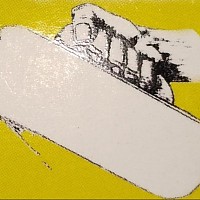Driveways/Walkways
When constructing a concrete driveway that extends to a public right-of-way, specific requirements must be followed
1. Permits and Approvals
Permit Application: Obtain a driveway permit from the local city or county office.
Right-of-Way Authorization: Secure approval for any work performed within the public right-of-way.
---
2. Location and Design Standards
Driveway Alignment: The driveway should be positioned to avoid interference with utilities, street intersections, and existing drainage systems.
Driveway Width:
Residential: Commonly 10-20 feet wide.
Commercial: Width may vary based on use and vehicle type, often 20-30 feet.
Driveway Slope:
Ensure the slope complies with local guidelines, often no steeper than 2% in the right-of-way area to avoid water runoff into the street.
---
3. Construction Material Requirements
Concrete Thickness: Typically 4-6 inches for residential driveways; 6-8 inches for areas that support heavier vehicles.
Reinforcement: Reinforced with rebar or wire mesh to increase durability.
Surface Finish: A broom or non-slip finish is often required for safety in public access areas.
---
4. Drainage and Grading
Proper Drainage: Ensure that the driveway does not impede the natural flow of water or cause runoff to adjacent properties.
Culverts or Drains: If the driveway crosses a ditch or drainage channel, you may need to install a culvert to maintain water flow.
---
5. Setbacks and Clearances
Distance from Property Lines: Maintain required setbacks from adjacent properties, usually 5-10 feet.
Utilities: Ensure clearance from underground utilities and utility poles. Call your local "Call Before You Dig" service to locate utilities.
---
6. Transition to the Street
Apron Design:
The transition between the driveway and the street (the apron) must comply with local standards.
Apron material is often specified (e.g., concrete, asphalt).
Curb Cut: If a curb exists, obtain approval for modifications, such as a curb cut or ramp.
---
7. Traffic and Safety Considerations
Visibility: Ensure the driveway does not obstruct visibility for drivers, pedestrians, or cyclists.
Markings: In some areas, reflective or warning markers may be required near the driveway's edge.
---
8. Inspection and Compliance
Inspections: The local building authority may require inspections at various stages of construction.
Final Approval: Ensure the finished driveway meets all local standards before it is officially approved for use.
---
Since requirements can vary widely based on your location, consult with your local Department of Public Works, zoning office, or a licensed contractor for specific guidelines and regulations applicable to your area.
ReplyForwardAdd reaction

